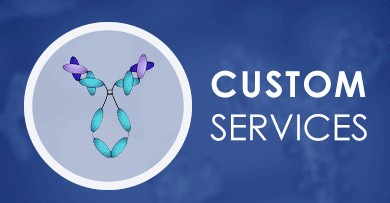+ Filter
 Loading...
Loading...

CD93
 Loading...
Loading...Anti-CD93 Products
-
- Derivation: Mouse
- Species Reactivity: Human
- Type: Mouse IgG1
- Application: WB, ELISA
-
- Species Reactivity: Human
- Type: Mouse IgG1
- Application: ELISA, WB, IHC, FC, ICC
-
- Species Reactivity: Human
- Type: Mouse IgG1
- Application: ELISA, WB, IHC
-
- Derivation: Mouse
- Species Reactivity: Human
- Type: Mouse IgG2b
- Application: WB, ELISA, FC, IP
-
- Species Reactivity: Human
- Application: FC, ICC, IF, WB
-
- Derivation: Phage display library
- Species Reactivity: Human
- Type: Rabbit IgG
- Application: WB, FC
-
- Species Reactivity: Human
- Type: Mouse IgG2b, kappa
- Application: FC
- Anti-CD93 Immunohistochemistry Kit (VS-0525-XY1248)
-
- Species Reactivity: Human
- Target: CD93
- Application: IHC
View More Products
Can't find the products you're looking for? Try to filter in the left sidebar.Filter By Tag
More Infomation
Our customer service representatives are available 24 hours a day, from Monday to Sunday. Contact Us
For Research Use Only. Not For Clinical Use.
Background
CD93, also known as C1qR or AA4, is a cell surface protein expressed on several immune cell types, including monocytes, macrophages, and endothelial cells. It is involved in the regulation of immune responses, particularly in the complement system. CD93 is thought to interact with the complement protein C1q and influence immune cell adhesion and migration. It is also involved in the process of phagocytosis, where immune cells engulf and clear pathogens or debris. CD93 has been associated with inflammation, atherosclerosis, and autoimmune diseases, and its potential as a therapeutic target for regulating immune responses is under investigation.
Protein class
CD markers, Plasma proteins
Predicted location
Membrane
Single cell type specificity
Cell type enhanced (Adipocytes, Endothelial cells, Hepatic stellate cells, Kupffer cells, monocytes, Macrophages)
Immune cell specificity
Group enriched (neutrophil, classical monocyte, intermediate monocyte, myeloid DC, non-classical monocyte)
Cell line specificity
Group enriched (HUVEC TERT2, TIME, U-937)
Interaction
Interacts with C1QBP; the association may represent a cell surface C1q receptor. (Microbial infection) Interacts with hepatitis virus C/HCV core protein.
Molecular function
Receptor
More Types Infomation



